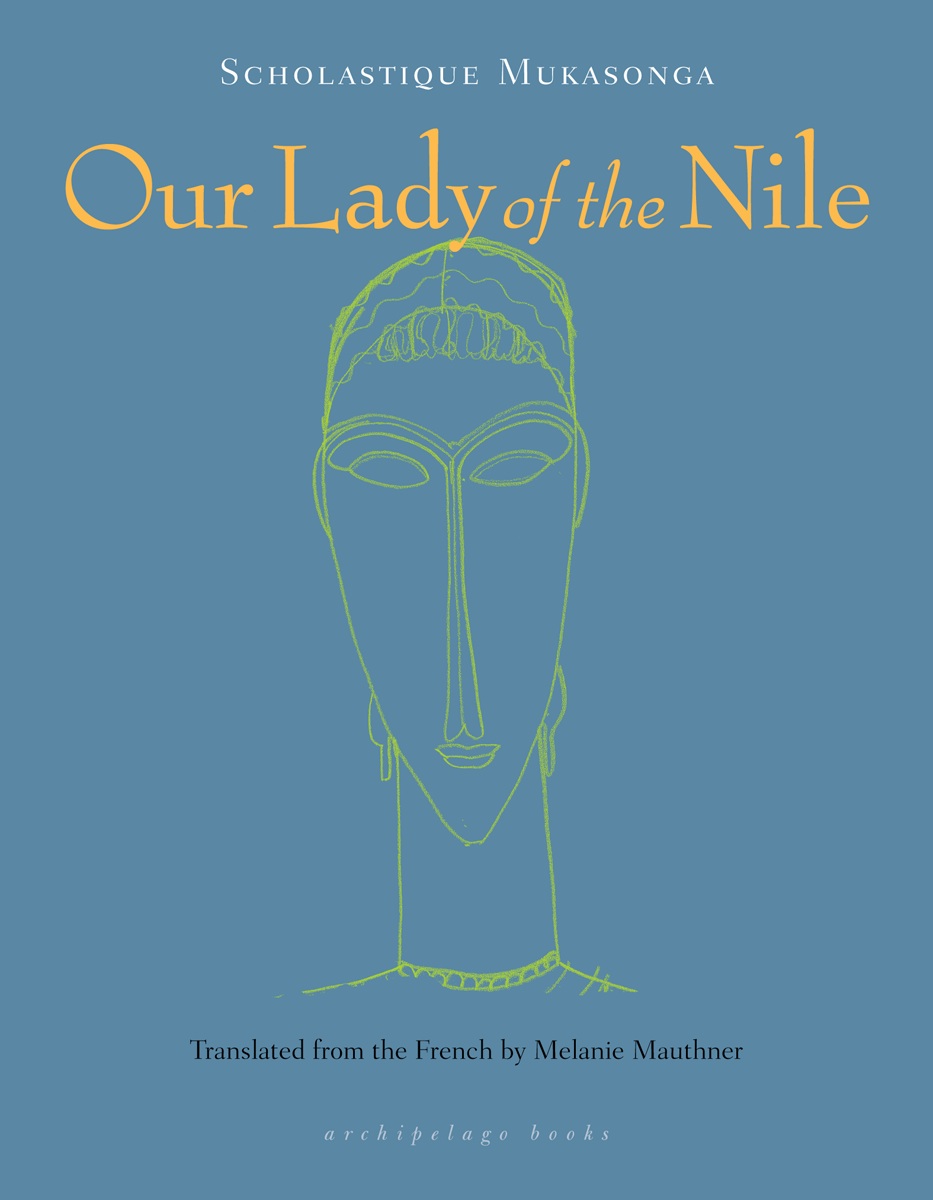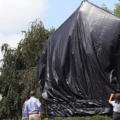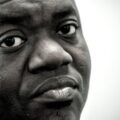Sources: Scholastique Mukasonga’s Our Lady of the Nile

In July, I travelled to Accra, Ghana for my sister’s engagement. Walking through my aunt’s one-story house, I searched the rooms for novelty and familiarity. So much had changed. Walls had been moved, doors had been made into windows, furniture was covered in sheets and those sheets were covered in dust. My aunt had just begun a major renovation on the house, and only her bedroom remained intact. The first night, the two of us slept in her bed. Within a week, we were joined by my mother and then my sister. For three nights, all four of us slept in one bed. My sister and I whispered and giggled as we imitated my mother’s snoring and talked about all of the life ahead of us. It was no different from the childhood nights when we stayed up late talking, planning, and comforting each other.

Our Lady of the Nile
by Scholastique Mukasonga
Translated from French by Melanie Mauthner
Archipelago Books, September 2014
Softcover, $14.40
In her English-language debut, Our Lady of the Nile, Scholastique Mukasonga writes that “fall[ing] asleep all squashed together” is the true test of authenticity for sisterhood. These bonds are tested in her narrative, not only by the typical trials of a boarding high school, but also by a broader political climate: Rwanda on the verge of genocide; Rwanda struggling with the vestiges of colonialism.
Constructed by “real white laborers,” the Our Lady of the Nile secondary school sits two kilometers from the source of the river Nile. Most of the students are daughters of government officials and businessmen. They have been enrolled as preparation for the prosperous marriages that await them. One mother explains that the “democratic and Christian education” the girls receive will solidify the freedoms attained during the social revolution.
When the kingdom of Rwanda was subsumed into German colonial territory in 1894—it later became property of the Belgians—the minority Tutsi population accounted for a large majority of the ruling class while the Hutu and Twa peoples were subjected to a lower social status. Backed by ideas of scientific racism, the European colonial powers (the Roman Catholic Church alongside the Belgian government) institutionalized this hierarchy. Within the violence of colonial domination, the Tutsi became a privileged ruling class.
Nearly four decades after Belgium first occupied Rwanda, the Hutu people organized themselves into a militarized political force. Bolstered by a broader pan-African movement, they led an effort to subvert the imposed Tutsi hierarchy as well as the colonial powers. After a series of political challenges, the Hutu finally gained dominance through a violent “social revolution”—some would say near-genocide—which forced hundreds of thousands of Tutsi into exile. The Belgian government had no choice but to allow a referendum on national independence.
Today, “genocide” and “Rwanda” are an inseparable pairing in global media. This year marks the twentieth anniversary of the 1994 genocide in Rwanda, in which 800,000 Tutsis were killed at the hands of Hutu militias. Reflecting on the future of the country for the Washington Post, Joann Weiner recalled the world’s response to Rwanda: “[I]n April 1994, conflicts in Bosnia, Haiti, and Somalia had overwhelmed the world’s capacity to intervene in a land-locked African country that’s not quite the size of Maryland. The world pretended that Rwanda didn’t exist.”
Weiner’s statement is not an aberration; it is now being said that the Central African Republic is being ignored as the world is overwhelmed by the Ukraine and ISIS . Africans killing Africans is mundane (unless an investment is at stake). Veronica, a student of Our Lady, says as much when the school administrators refuse to intervene in the violence on campus: “When the killers fall upon us, some will say: it’s always been like that in Africa, savages killing each other for reasons no one understands…”
Although my personal recollections of media coverage in 1994 are paltry (I was an elementary school student at the time), the genocide is a relational point for political events in Rwanda. We construct national narratives in this way—around moments in which the world was made to pay attention to our country. Nigeria has Biafra. Argentina has the disappeared of its Dirty Wars. At this very moment, as I am writing this, my United States has Ferguson. These are mere pinpoints in long histories of war and terror, but the ghosts of “moments” like these have created canons. Where the trauma of violence suppresses, artists resist. In the words of Edwidge Danticat, (exiled) artists create as “a revolt against silence.” The work of Scholastique Mukasonga is exemplar of this.
In an interview with the New Welsh Review, Mukasonga stated that it was the 1994 genocide in Rwanda that made her a writer. When she returned to her hometown in 2004—a decade after losing more than two dozen family members—she “became aware of [her] duty” of remembrance. Between 2006 and 2010, she published three books, all with narratives motivated by the genocide. Our Lady of the Nile, Mukasonga’s fourth book, was originally published in 2012. Translated by Melanie Mauthner, it is the first of Mukasonga’s books to be published in English.
I read the English translation during my Accra trip. My aunt—who knew nothing of what I was reading—analogized our living conditions to that of a boarding school. As I discreetly dressed each night after showering, she taunted me, What on earth are you hiding? What do you have that I don’t? At moments when the girls of Our Lady teased each other, I considered how small the difference is between girls and grown women sharing close quarters. But my aunt and I can go on with our lives, pretending to be individuals with little relation to the world. The girls of Our Lady bear the burden of representing the complexities of a specific historical moment. They are girls repressed by the misogyny of Catholicism. They are black girls in a society that privileges whiteness. They are Tutsi students bullied by the majority Hutu girls.
Our Lady of the Nile is set in the years before the 1994 genocide. The novel is not reduced to a single and simple narrative; it reads as a collection of interconnected stories. In ‘Rain’, two of the schoolgirls, Immaculée and Veronica, go to a healer to remedy the wanderings of Immaculée’s boyfriend. When they return, Veronica recounts the adventure to her classmates. By the time we get to ‘Gorillas’, Immaculée is bored with her boyfriend in the city. She decides that during Christmas break she’ll go with her friend Goretti to see the gorillas. The trip is an act of reclamation. Since the whites have made a cause out of saving the gorillas (from the Rwandans), Goretti announces her trip to the other girls as if she is in pursuit of her birthright. In January, it is Goretti who tells of the fearful guide who abandoned them and the deal they had to make with residents of the forests before being able to see the gorillas.
Throughout these tales, Mukasonga insists that we learn what Rwanda is and has been. There is no singular hero or anti-hero and characters are often in service to the narrative, representing actors of Rwandan political history. There are Hutu and Tutsi students; Belgian teachers and French volunteers; and a lone, eccentric white farmer with a wealth of knowledge of Rwanda and a savior mentality. The decision to set the novel at a Catholic school is purposeful. In a rambling welcome speech, the head of the school, Father Herménégilde boasts of the small but important role he played in the social revolution as an instigator of the 1957 Bahutu Manifesto. As tensions between Hutu and Tutsi students rise on the campus, the administrators make no intervention. History has shown a less passive response from the Roman Catholic Church; Catholic priests were accused of murder during the 1994 genocide.
In the character of Monsieur de Fontenaille (the white farmer), Mukasonga employs her tremendous wit. The man is obsessed with Tutsi history. He has given up the coffee planting that brought him to Rwanda in order to fulfill his destiny. Since the Tutsi have “lost their memory,” he believes he is the keeper of their history and will be the one to reinstate the Tutsi to their rightful and royal position. It’s clear that Mukasonga isn’t afraid of implicating the racism of European colonists and their white savior counterparts. This stands out in particular, given the public conversations on how Africans experience race (as re-invigorated by the release of Chimamanda Ngozi Adichie’s latest novel, Americanah).
Reflecting on the similarities between herself and the protagonist of Americanah, the Nigerian novelist has said that “race doesn’t occur to [her]” when she is in Nigeria as it does when she is in the United States. Of course, the physical presence of whiteness isn’t the only prompt for the experience of race. The scholar Jemima Pierre argues that racialization exists even when white bodies are absent, as evidenced by practices that privilege (proximity to) whiteness. In Our Lady, one student, Godelive, is afforded the opportunity to travel to Belgium. She knows that she will need nail polish and lipstick. She also knows that the perfumes that the Pakistanis sell do not compare to those from Paris. She wonders about the black women of beauty magazines who have been able to go blonde. And above all, she knows that there must be creams more effective at lightening her skin than the Venus de Milo they are all used to.
In some ways, Our Lady of the Nile counters the current U.S. publishing trend in cosmopolitan African narratives. The novel was not originally written in English and though the author resides in France, the work is fully set in Rwanda (and primarily within rural areas of the country). It would be shortsighted to say that Our Lady of the Nile is a complete anomaly in this era (helmed by Adichie’s historical novel, Half of a Yellow Sun) but it recalls earlier African writers. With Mukasonga’s commitment to political history and her manner of wit, Our Lady of the Nile more closely resembles work by Ama Ata Aidoo and Ferdinand Oyono than Adichie or Teju Cole.
Critic Arnaud Viviant describes Our Lady of the Nile as an “incredibly light novel” that helps readers to understand the “ethnic, political, and religious reasons behind the massacre” of the Tutsi. This is a most apt description. Our Lady is, in fact, a series of girlhood adventures infused with the complicated and violent histories of Rwanda. For the umwiru—the keepers of history—“forgetting means death,” and so Scholastique Mukasonga has given us this novel of testimony.
About Nina N. Yeboah
Nina is a writer, researcher, and black art enthusiast. She currently lives in Chicago, IL.





